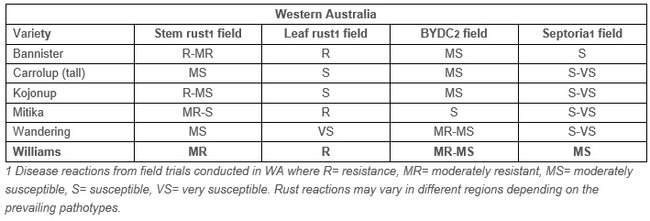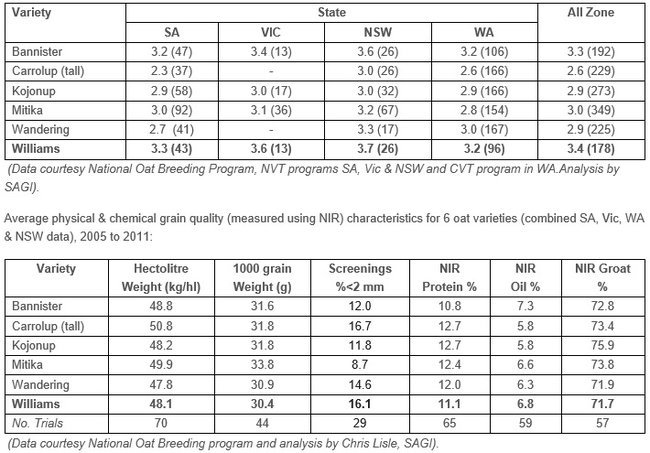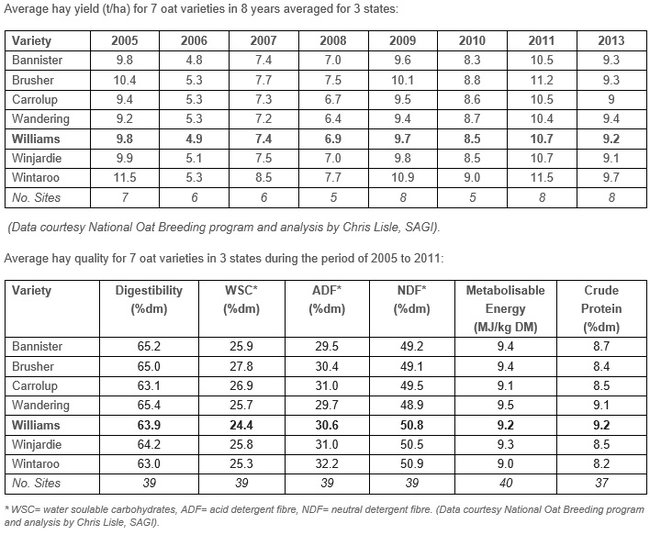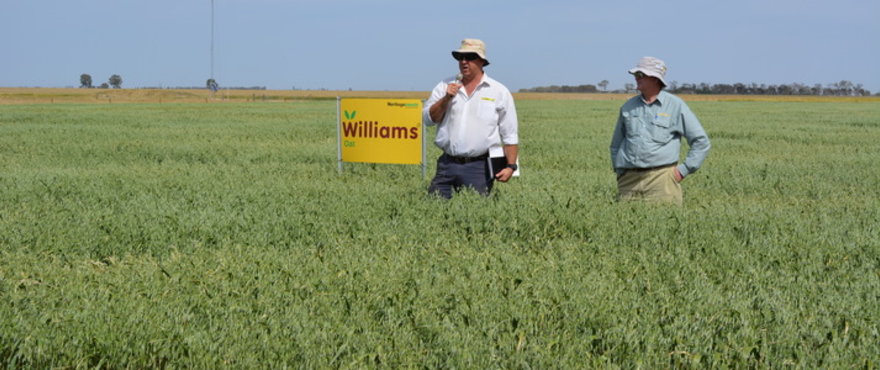Williams is a mid-tall, high yielding oat adapted to Western Australia. It flowers slightly earlier than Carrolup and about a week to 10 days earlier than Kojonup. Williams is moderately resistant to stem rust and resistant to leaf rust in WA. It also has improved septoria resistance compared to Carrolup and Wandering. Williams is a potential milling variety. Hectolitre weight is similar to Kojonup and slightly lower than Carrolup. Screenings are similar to Carrolup and groat percent slightly lower than Carrolup and Mitika.
Pest resistance
Consult your preferred agronomist / advisor for up to date advice on Williams’s pest resistance and associated management decisions.
Disease resistance / tolerance
Stem rust, leaf rust, BYDV and septoria reactions for 6 grain varieties in Western Australia.

Sowing rate
A formula can be initiated to calculate sowing rates – taking into account target plant density, germination percentage, seed size and establishment rates.
Example
1000 seed weight in grams = 30
Target plant population / sq metre = 140
Establishment % = 80
Germination % = 90
Sowing Rate = 30 x 140 / 100 / (0.8 x 0.9)
Sowing Rate = 58 kg/ha.
Performance
Average grain yields (t/ha) in 4 states and the average for all states for 6 oat varieties (2005 to 2012) with the number of trials in brackets:


Herbicide tolerance
Please contact your local Barenbrug' territory manager or agronomist for up to date herbicide tolerance data.
Information is also available via DAFWA website - “Herbicide Tolerance of Bannister and Williams Oats.” ref: Harmohinder Dhammu, Research Officer and Vince Lambert, Technical Officer, Department of Agriculture and Food WA, Northam and Katanning.
Variety management / agronomy
Williams should be treated in a similar way to other milling and feed oats except where reference has been made to specific issues in this brochure. Annual rainfall - suitable for low (350mm) to medium (800mm) annual rainfall areas. Areas of adaptation – Williams has performed well in all rainfall locations where cereal cyst nematode and stem nematode are not a problem. It is a potential milling variety and can be used as feed oats in all WA AgZones. Williams has consistent high yields and improved stem and leaf rust resistance.


